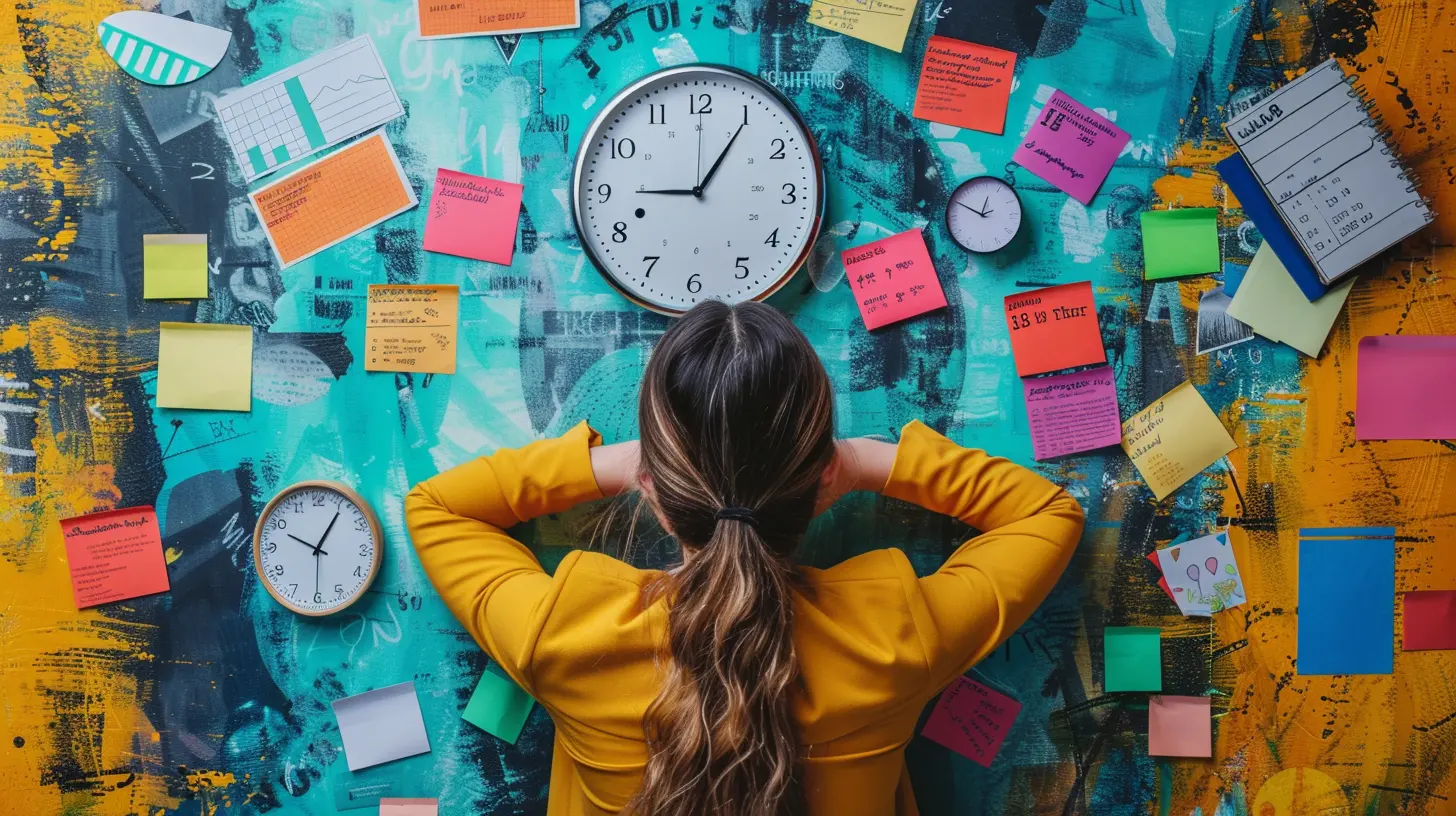How Setting Limits Can Increase Your Time Efficiency
30 May 2025
Time is one of the most valuable resources we have, yet it often feels like there's never enough of it. Between work, personal commitments, and the constant distractions of modern life, staying productive can be a challenge. But here’s the good news—one of the most effective ways to boost your time efficiency is simply setting limits.
When you create clear boundaries around your time, you not only become more efficient but also free yourself from overwhelm and burnout. In this post, we’ll break down how setting limits can maximize your productivity, keep you focused, and help you achieve more in less time. 
Why Setting Limits Matters
Imagine trying to fill a glass with water without worrying about how much is enough. Eventually, the water will overflow, causing a mess. The same principle applies to your time. When you don’t set limits, your workload keeps piling up, leaving you feeling exhausted and unproductive.Setting limits helps in multiple ways:
- Prevents burnout by ensuring you don't overwork yourself.
- Enhances focus by eliminating distractions.
- Encourages better time management by defining clear priorities.
- Improves work-life balance, leaving time for personal activities.
Now, let’s dive into practical ways to set limits and increase your time efficiency. 
1. Set Time Blocks for Tasks
One of the best ways to boost your efficiency is by using time blocking. This technique involves scheduling specific blocks of time for different tasks throughout the day.Instead of randomly jumping between activities, you assign a set time for each task. For example:
- 9:00 AM - 10:30 AM → Deep work (no distractions)
- 10:30 AM - 10:45 AM → Short break
- 10:45 AM - 12:00 PM → Reply to emails and messages
By doing this, you create structure in your day, reducing decision fatigue and boosting productivity.
Pro Tip: Use a timer or app like Pomodoro to stick to your time limits. 
2. Limit Your Work Hours
Working non-stop might seem productive, but it actually reduces efficiency. Studies show that working beyond a certain number of hours leads to fatigue, making you less effective.If you currently work 10-12 hours a day, try reducing that to 8-9 hours with a hard stop time. When you know you have limited hours to complete your work, you naturally prioritize better and eliminate unnecessary tasks. 
3. Reduce Meeting Times
Meetings are often the biggest time wasters. If you find yourself spending hours in unproductive meetings, it's time to set some limits.- Keep meetings short and to the point (30 minutes or less).
- Create an agenda and stick to it.
- Ask yourself, "Can this be an email instead?" before scheduling a meeting.
By setting time boundaries for meetings, you free up time for more important work.
4. Set Communication Boundaries
Constant emails, Slack messages, and phone calls can kill your productivity. If you’re always available, you’re always distracted.To set limits:
- Schedule specific times to check emails (e.g., twice a day instead of every hour).
- Turn off unnecessary notifications during work hours.
- Use "Do Not Disturb" mode when focusing on deep work.
This ensures that you're not constantly interrupted, allowing for deeper focus and faster task completion.
5. Know When to Say No
Saying yes to everything can be a recipe for disaster. If you constantly take on more than you can handle, your efficiency will suffer.Learn to say no to:
- Meetings that don’t add value.
- Extra tasks that don’t align with your priorities.
- Social commitments that drain your energy.
By setting clear limits, you can focus on what truly matters.
6. Limit Social Media and Distractions
We all know how easy it is to get sucked into an endless scroll on social media. A “quick” check can turn into an hour of wasted time.To avoid this, set strict limits on social media use:
- Use apps like Freedom or StayFocusd to block distracting websites.
- Set a time limit (e.g., 30 minutes a day) for social media.
- Keep your phone in a separate room while working.
By reducing distractions, you improve focus and get more done in less time.
7. Give Yourself a Time Limit for Tasks
Ever heard of Parkinson’s Law? It states that work expands to fill the time available for its completion.If you give yourself 3 hours to write a report, it'll take 3 hours. But if you limit yourself to 90 minutes, you'll likely still complete it in that time.
Set time limits for every task, such as:
- 60 minutes for writing a proposal.
- 30 minutes for responding to emails.
- 45 minutes for brainstorming ideas.
This forces you to stay focused and work efficiently.
8. Avoid Multitasking
Multitasking might seem efficient, but it actually reduces productivity. When you juggle multiple tasks at once, your brain constantly switches gears, making each task take longer.Instead, try single-tasking:
- Focus on one task at a time until it’s done.
- Use the Pomodoro technique (25-minute focus sprints).
- Prioritize your most important task first.
Doing one thing at a time ensures higher quality work in less time.
9. Set Boundaries Between Work and Personal Life
With remote work becoming more common, it’s easy for work to bleed into personal time. But burnout happens when there’s no clear separation.To create balance:
- Set work hours and stick to them.
- Have a shutdown ritual (e.g., turning off your computer at a specific time).
- Keep a separate workspace if possible.
By setting limits between work and personal life, you maintain mental clarity and sustain long-term productivity.
10. Prioritize Rest and Downtime
Think productivity is about working non-stop? Think again. Taking breaks and getting enough rest is essential for efficiency.Schedule regular downtime:
- Take short breaks every 60-90 minutes.
- Have at least one day off per week.
- Prioritize 7-8 hours of sleep every night.
A well-rested brain works faster and smarter than a tired one.
Final Thoughts
Setting limits isn’t about restricting yourself—it’s about freeing yourself from distractions, inefficiencies, and burnout. When you establish clear boundaries around your time, you gain control, work more efficiently, and create space for the things that truly matter.So start today! Identify where you need to set limits and take action. Your time, energy, and productivity will thank you.
all images in this post were generated using AI tools
Category:
Time ManagementAuthor:

Lily Pacheco
Discussion
rate this article
2 comments
Nyari Shaffer
Setting limits empowers focus, leading to greater efficiency and personal success!
June 2, 2025 at 2:23 AM

Lily Pacheco
Absolutely! Setting limits helps prioritize tasks and minimizes distractions, ultimately boosting productivity and success.
Elias Young
Ah yes, setting limits—because who wouldn't want to trade endless procrastination for the joy of actual productivity? Next up: a revolutionary guide on how to breathe between tasks!
May 30, 2025 at 4:30 AM

Lily Pacheco
Thanks for the humor! Setting limits can truly transform procrastination into productive moments, one breath at a time.


